Oliver’s daily(ish) blog on creativity, regenerative design and practical philosophy drawn from across my teaching, writing and collaborations. Sign up for his weekly digest by clicking here and choosing the appropriate button.
- On pattern spottingPattern is a word I use a lot. Recently, a reader wrote to say how much they appreciated this use of pattern language in my writing. And that made me …
- Your processes versus entropyRegular readers of this blog will know all about the second law of thermodynamics, which states that the universe will tend toward disorder over time. Thus any organised system will …
- How do we know if we are moving forwards?Facilitation is an intense business. It requires you to read lots of social cues and to judge what’s the best next step. It’s not surprising therefore that when travelling home …
Continue reading “How do we know if we are moving forwards?”
- The hidden cost of a quick messageThe easiest thing to do on your design project is to send a quick message. The problem is, it’s also the easiest thing for everyone else to do. And then …
- Why everything falls apart — and what to do about itThe second law of thermodynamics says that the universe is heading towards disorder. Life is the daily channelling of the flow — temporarily creating new structures: life forms, habitats culture. …
Continue reading “Why everything falls apart — and what to do about it”
- Incline? Uncline? Recline?I caught myself wondering in a workshop this week, what is the opposite to decline? Incline? Uncline? Recline? A bit of context. I often look at places in need of …
- Easier to talk about what we don’t want than what we doThis riff is a partner to my one this week on humour and sarcasm. If you’ve read that one you’ll spot the connection. I’ve noticed recently that workshop groups tend …
Continue reading “Easier to talk about what we don’t want than what we do”
- How connections slip through our fingersI’ve been doing work this week with teams thinking about interconnection. More precisely, how connected we are to the places impacted by our design decisions. Take the component of a …
- Comfy clothes, favourite tools and the Three HorizonsYou probably have a favourite piece of clothing to put on and put you at ease. Maybe a hoody, a jumper, … a favourite onesie. When something fits, you wear …
Continue reading “Comfy clothes, favourite tools and the Three Horizons”
- Attempts to give up sarcasmA few years ago I made a New Year’s resolution to stop being sarcastic. Some of my favourite comedians use sarcasm. Pointing to what something is by saying the opposite …
- Three Horizons facilitation (90 minutes) — sometimes all people need is the picture
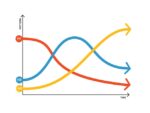 The Three Horizons model is one of our key tools in the Regenerative Design Lab for exploring change. It’s simple enough to grab in a short space of time (see …
The Three Horizons model is one of our key tools in the Regenerative Design Lab for exploring change. It’s simple enough to grab in a short space of time (see … - Big news — Cohort 6 Applications for the Regenerative Design Lab are now open
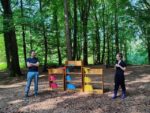 Our big news this week is that the application process is now open for Cohort 6 of the Regenerative Design Lab. Here’s some things that make this moment particularly significant …
Our big news this week is that the application process is now open for Cohort 6 of the Regenerative Design Lab. Here’s some things that make this moment particularly significant …Continue reading “Big news — Cohort 6 Applications for the Regenerative Design Lab are now open”
- I’m so glad the humans have comeJust imagine, you are visiting the site of a new development. And you are suddenly aware that you are surrounded by voices. The voices include the insects, the animals, the …
- Field notes: trying on the Systems Change Lab for size
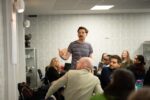 Last week I had the privilege of facilitating an afternoon session for the Engineers Without Borders UK Systems Change Lab in London. This is such a powerful initiative. It is …
Last week I had the privilege of facilitating an afternoon session for the Engineers Without Borders UK Systems Change Lab in London. This is such a powerful initiative. It is …Continue reading “Field notes: trying on the Systems Change Lab for size”
- Feedback = understandingI’m grateful to my friend and Regenerative Design Lab colleague Ellie Osborne for this model. On the second day of our Cohort 5 Autumn Residential, we were sitting around the …
- Flops — the aérotrain
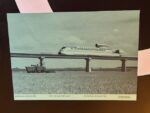 I snapped this photo of a photo at the Flops?! exhibition last month at Paris’s Musée des Arts et Metiers. The exhibition explores the importance of failure in design. Which …
I snapped this photo of a photo at the Flops?! exhibition last month at Paris’s Musée des Arts et Metiers. The exhibition explores the importance of failure in design. Which … - Everything had to change for everything to stay the sameThis is the key line in one of my favourite films, Visctonti’s 1963 The Leopard. Based on the novel of the same name by Giuseppe Tomasi de Lampedusa, the film …
Continue reading “Everything had to change for everything to stay the same”
- Facilitation technique: The Fish BowlThe fish bowl is facilitation technique that enables a large group of people to observe a small group. The small group sit around a table and discuss a topic. The …
- Starting to see the systemYesterday we kicked off our new introduction to regenerative design, ‘Seeing the System’. The premise is simple: seeing more clearly the systems we are working with as a precursor to …
- TorporI like the word ‘torpor’ — a state of physical or mental lethargy. I like the word much more than I like feeling it. I feel torpor when I spend …
- The algorithm works for Horizon OneThe algorithm works for Horizon One.* The bit of code, which decides what you see next on your device, is optimised to keep you looking at your screen, and staying …
- …because there is still a climate emergencyThe most compelling factor in considering whether to accelerate decarbonisation of construction: …but that there is still a climate emergency[1], triggered by emissions of carbon dioxide into the atmosphere, and …
Continue reading “…because there is still a climate emergency”
- The last time the nuclear circus arrived
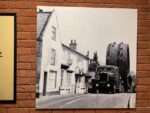 I love this photo of a photo, which I snapped last week at a sports centre near Sizewell power station. It was taken the last time a power station was …
I love this photo of a photo, which I snapped last week at a sports centre near Sizewell power station. It was taken the last time a power station was … - Stacked multiple ‘beanifits’Beans. Fix nitrogen in the soil when they grow, increasing soil health in the process. Are a useful replacement for more carbon-intensive protein sources such as meat Require a third …
- The simplest embodied carbon calculationBuild less.
- Complete idiomAs the idiom goes: Jack of all trades, master of none. But did you know this is only half of it. The full idiom is: Jack of all trades, master …
- I’m so glad I came to your meetingWhat would make someone say this? How you greet them? The thought you put into the structure? Checking what they need to participate? The care in deciding who attends? The …
- Does power support change?Earlier this week I wrote about designers needing to understand the conditions for change. What enables change and what blocks it? If we understand organisational culture as how things get …
- Never mind the aurochs…here’s the Tauros. I read last week that Aurochs were the third heaviest mammals to wander Europe, after woolly mammoths and their sartorial companions, woolly rhinoceroses. Aurochs were like giant …
- What’s holding the current situation in place?Design is about making change. Our aim is to turn an existing situation into a better situation. Sometimes that might be about designing a new thing. But other times it …
Continue reading “What’s holding the current situation in place?”
- Where we make but also where we takeThis has become one of my catchphrases in regenerative design*. To think of design as being for ‘where we make but also where we take’. The role of the regenerative …
- Just build lessMore and more people are asking: how do we move from sustainable design to regenerative design? In these conversations, we often talk about system change. We talk about strengthening the …
- Seeing the latent potentialAs Rob Hopkins points out in his wonderful book From What Is to What If, the climate crisis is, at its core, a crisis of the imagination. If we can’t …
- I’m an engineer, I feel your pain and I have a planThis little refrain is my version of Aristotle’s three artistic truths for making a convincing argument. Aristotle proposed three things were needed to win people over. The first is ethos …
Continue reading “I’m an engineer, I feel your pain and I have a plan”
- Think of a world without any emailThis came up in a workshop yesterday so I am sharing it today. There will be a time in the future for a longer set of posts on how engineers …
- Designers as outsiders… and insidersAs designers we are outsiders. The norm is the middle lane. But we want to make things better. To change the direction of travel. To advocate for something different. Choosing …
- The signal and the coincidenceYesterday at a workshop I am attending (more on this soon), I was given a slip of paper with a question to reflect on. It said: How do we make …
- The wrong (moment to put on your waterproof) trousersThis is a post for the cycling decision-makers among you. It may resonate even if you don’t cycle. Variations on the question of whether, if it starts raining when cycling, …
Continue reading “The wrong (moment to put on your waterproof) trousers”
- You only learn when you do difficult thingsThis is my catchphrase for the start of workshops: ‘You only learn when you do difficult things.’ It is a reminder to expect things to be difficult when we try …
Continue reading “You only learn when you do difficult things”
- The past, present and future at the same time
 In conversations about regenerative design we draw heavily on Bill Sharpe’s Three-Horizons Model because it allows us to make sense of a complex situation. In any group of people collaborating on a …
In conversations about regenerative design we draw heavily on Bill Sharpe’s Three-Horizons Model because it allows us to make sense of a complex situation. In any group of people collaborating on a …Continue reading “The past, present and future at the same time”
- On the Ultraviolet Catastrophe and teaching designIn the first year of my undergraduate chemistry course, we learnt about a concept called the Ultraviolet Catastrophe. This term refers to a phenomenon predicted by classical physics that people could …
Continue reading “On the Ultraviolet Catastrophe and teaching design”
- Design versus shoppingI’ve said it elsewhere, and so now I’m saying it here. If the client knows exactly what they want at the start of a design process, then it isn’t design …
- 340-degree visionI read on a fact sheet that guinea pigs have 340-degree vision. On a horizontal plane they can see almost all around. Imagine! Their only blind spots are directly behind …
- Mindset leverageAre you excited about the possibilities of your next project? Or worried about the unknowns? Do you see the possibility for competition or collaboration? There is not a part of …
- The ScheduleI am sharing today a schedule I use in my work every time the noise from distractions gets too much and/or I don’t actually think I am making any progress …
- Start with your scalesI was taught to start my music practice by playing my scales. Starting with your scales: Starting with your scales doesn’t just apply to instruments. It applies to any work where …
- Field notes from chaos(This is another archive post from September 2024 — re-reading it, I realise there’s potential to create a new pattern book motif on chaos, how we work with it, and …
- Harnessing Waves in Our Work
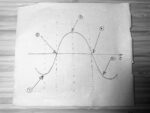 (This post from the archive originally appeared in September 2024, and became a motif in the Pattern Book for Regenerative Design) Today’s post picks up on yesterday’s theme of riding …
(This post from the archive originally appeared in September 2024, and became a motif in the Pattern Book for Regenerative Design) Today’s post picks up on yesterday’s theme of riding … - Riding the waveI spent most of yesterday afternoon up to my middle in waves learning to surf [this is a repost from the archive, so this didn’t actually happen yesterday!]. I’ve got …
- The Great FlatteningJim Crace’s book Harvest provides fascinating portrait of rural life in England just before the start of the Industrial Revolution. What is so striking is the way the pattern of life is …
